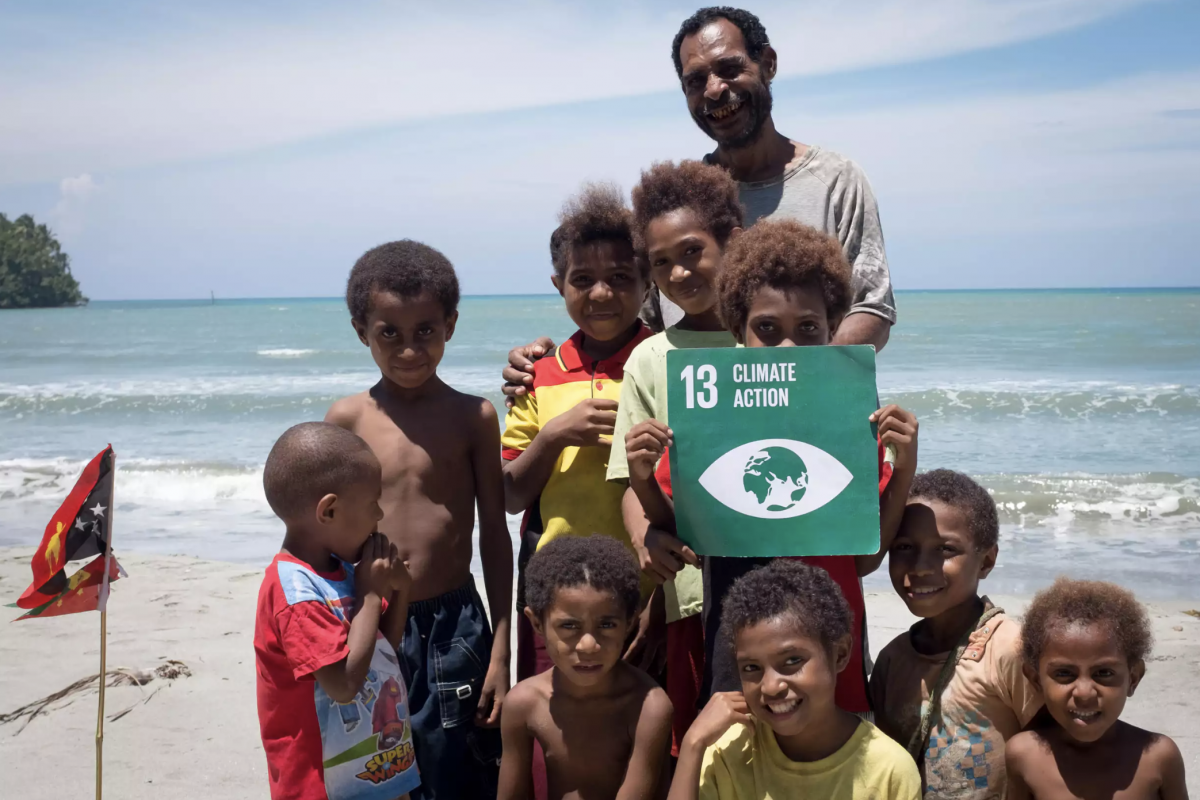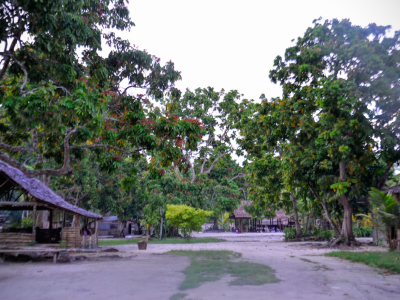
Country background, Sustainable Development Goals and Paris Agreement
Papua New Guinea (PNG) is in Oceania, between the Coral Sea and the South Pacific Ocean, encompassing half of the island of New Guinea and its offshore islands. PNG has a tropical climate, experiencing monsoon season in the northeast from December to March and in the southeast from May to October. The country is already exposed to a host of hazards such as earthquakes, tsunamis, volcanic eruptions, coastal flooding, inland flooding, landslides and drought which the UN Office for Disaster Risk Reduction (UNDRR) reported cost USD 23 million of economic losses between 2005 and 2014 alone. Climate change is expected to increase the average annual rainfall through to 2100, resulting in frequent and severe flooding in valleys and wetlands.
All of these impacts are detrimental to PNG’s development and the livelihoods of its people. Nearly 40 percent of the population (7.6 million) live below the poverty line, and subsistence agriculture accounts for 25 percent of the country’s GDP and supports over 80 percent of the population. Climate change impacts are likely to significantly hamper agricultural activity, and the International Monetary Fund already reported that the contribution of the agricultural sector to the nation’s GDP dropped by 18-20 percent in 2017. Furthermore, climate induced coastal and inland flooding is highly likely to contaminate freshwater sources and risk the spread of water-borne diseases.
To combat these threats PNG has been working to strengthen its institutional framework through a combination of policy documents and national plans, to effectively adapt to the impacts of climate change, while striving to achieve the Sustainable Development Goals. The Papua New Guinea Vision 2050 (2009) contains a strong focus on environmental sustainability and climate change, and guides the country’s economic development up to 2050. The National Climate Compatible Development Management Policy focuses on sustainable economic development, which is climate resilient and carbon neutral, and the Climate Change (Management) Act of 2015 outlines the government’s steps for adaptation to climate change. In 2015 PNG submitted their Intended Nationally Determined Contribution to the Paris Agreement, which became an official commitment when they ratified the agreement in 2016. This document outlines nine priority areas to focus on climate change adaptation and hazard risk reduction: (1) coastal flooding and sea level rise; (2) inland flooding; (3) food insecurity caused by crop failures due to droughts and inland frosts; (4) cities and climate change; (5) climate induced migration; (6) damage to coral reefs; (7) malaria and vector borne diseases; (8) water and sanitation; (9) and landslides.
How has the NAP-GSP supported to date?
Supported a stocktaking activity |
In June-July 2017, the NAP-GSP supported the government with a stocktaking of the current climate change adaptation initiatives. Through desk reviews of existing documentation, policies and strategies and, an assessment of relevant initiatives on climate mainstreaming and of the institutional framework and capacities relevant to the NAP process was conducted. |
Production of a Stocktaking Report | Based on the desk research, a Stocktaking Report was produced. The findings were validated through a stakeholder consultation mission and a two-day training workshop on the NAP process, that took place in Port Moresby during 9-10 August 2017. |
Helped build capacity and facilitated access to additional climate finance
|
From August 2017, with UNDP and NAP-GSP support, the government of PNG began preparing a Readiness and Preparatory Support Proposal to submit to the Green Climate Fund (GCF), outlining a NAP project for potential funding. The initial submission of the - Advancing Papua New Guinea’s National Adaptation Plan – project outlined in the Readiness proposal was made in October 2017. The proposal focuses on strengthening a mechanism for multi-sectoral coordination at various levels of government to integrate climate risks in development planning and establishing a financing framework for climate adaptation for medium-to long-term. |
Level of intervention:
- National
Key collaborators:
- National Governments
Project status:
Completed
Project dates:
2019
Location:
Papua New Guinea




